Part Two – A Very Ordinary Seaman
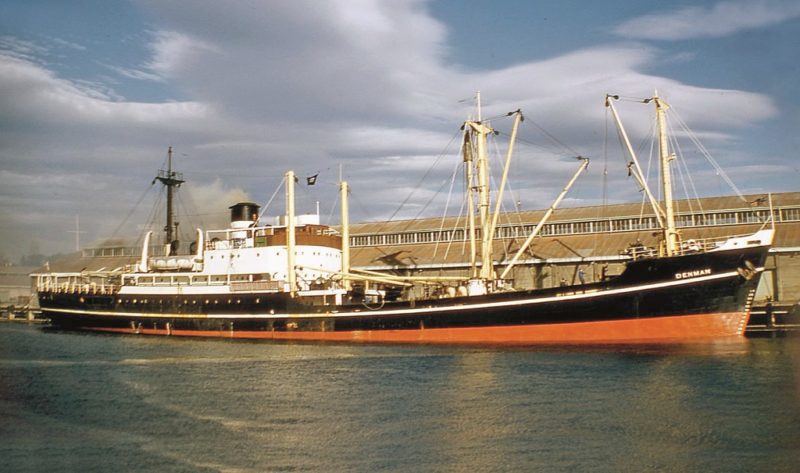
Having completed my sea time as deck boy on the SS Balarr I paid off in September 1957 at age 16 and joined the SS Denman my first ship as Ordinary Seaman in October. The next few years were uneventful, and I continued to work on a wide range of merchant ships.
In 1959 both my brother and I served on the MV Baralga for what would become a unique voyage for an Australian ship as Australian shipping was traditionally coastal trade. Owned by the Australian National Line it was given a charter to deliver a full cargo of railway sleepers to Calcutta as part of some foreign aid program.
Our first loading port was Eden a small fishing port in New South Wales, much too small to fully accommodate a ship the size of the Baralga alongside the berth resulting in the ship having to be moored with headlines to the wharf and stern lines to a buoy with only the forward three cargo holds and the midships accommodation alongside the wharf.
The part loading was to take a couple of days and we were able to go ashore at the end of each day. The only place to get any alcohol was at the Fisherman’s Club which in a small fishing port can be quite exclusive as was this one. After sailing it was a short run up the coast for a further part loading of the cargo in Coffs Harbour after which we sailed to our next port, Brisbane, to finish the full load of cargo.
While the ship was in Brisbane, we were given a battery of injections for smallpox, cholera and yellow fever being hit with the lot over two days. The effect was an overall shock to the body resulting in fever, chills, tiredness, and not much interest in working. To complete the process, we were issued with a Seaman’s Document of Identity rather than a passport.

After sailing from Brisbane, we continued up the coast of Queensland to the Port of Townsville where we topped up the fuel bunkers, freshwater tanks, and stores. The early part of the voyage meant passing near the Island of Sumatra. Lying to the east of Sumatra is Banka Island, notorious for the murder of Australian nurses by the Japanese after the fall of Singapore in 1942.
A group of Australian nurses and British soldiers who were captured while attempting to flee from Singapore were murdered by the Japanese in what came to be known as the Banka Island massacre. Captured by the Japanese they separated the male soldiers and the female nurses before bayoneting the men out of sight of the nurses then marching the nurses into the surf and machine gunning them.
The sole survivor of the nurses was nurse Vivian Bullwinkle who although being machine gunned and wounded in the massacre survived by playing dead. She hid in the jungle and was taken as a prisoner of war, eventually returning to Australia at the end of the war.
During her time in captivity, she never mentioned that she was a survivor of the massacre for fear that if the Japanese knew they would kill her as they didn’t want any evidence of the incident.
Of the small group of men who were massacred, two are known to have survived. Realising we were to pass this island we constructed a cross, and shield inscribed with the words:
- Australian Nurses
- Murdered by Japs
- Banka Island
- Crew Australian Ship
- Baralga
- Date
With the agreement of the ships Master, and at an appropriate time when passing the Island, the ship was slowed, a short service was held and the cross lowered over the side, released and the voyage continued.
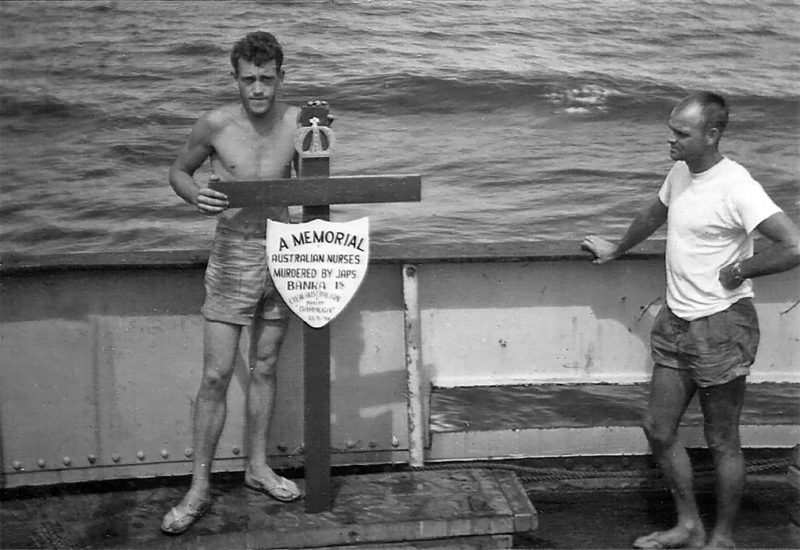
With no air conditioning other than a single porthole and a punka louvre system of air blown through a small ball for spot cooling in each cabin, the accommodation became hot. The outside atmosphere also became moist as we steamed across the Indian Ocean. After a few days of this we decided to innovate and with the permission of the chief officer built a swimming pool using some wooden hatch boards and a canvas tarpaulin. Surrounded by an ocean of salt water it was only a matter of connecting a wash down hose to a hydrant and the pool was constantly full. Care had to be taken when near the outside of the pool as it was hard up against the side of the ship.
The next 15 days at sea were without incident other than saturation monsoonal rain for several days and nights while in the Bay of Bengal, then a long run up the Hooghly River to the port of Calcutta. After clearing Quarantine and Customs we berthed, cargo commenced, we broke sea watches (4 on 8 off) and resumed ‘day work’ hours. Normally this would be from 0800 to 1700 but we had an agreement with the chief officer that ‘day work’ hours while in Calcutta would be based on a ‘tropical day’ of 0600 to 1300. Early excursions ashore were to the markets where we purchased the usual useless trinkets, but this ‘tourist’ activity soon became boring with the inevitable result that shore excursions quickly turned to visits to one or more of the best hotels.
After seven days in Calcutta the cargo was discharged, fuel and fresh water topped up (the fresh water had to be heavily chlorinated) and we sailed back to Australia for our next cargo, a load of iron ore from Cockatoo Island in Yampi Sound, northern Australia. The voyage to Yampi Sound took about 15 days. The loading of iron ore involved quite a lot of work opening and closing cargo hatches and shifting the ship along the jetty to accommodate the fixed loading conveyor belt. At the end of the loading the white superstructure was covered in red iron ore dust that took endless work after sailing to try and get it off and return the paintwork to some semblance of white. Instead of going to Newcastle or Port Kembla as expected we finished up mooring to a buoy in Sydney Harbour where we cleared Quarantine and Customs. It was here that I paid off and headed back to Brisbane where I presented myself to the union roster and picked up a job as a deckhand on a trailer suction dredge the SD ‘Echinese’ working on the Brisbane River.

This job lasted four months at which time I decided it was best if I returned to sea and complete the remaining sea time necessary to obtain the rank of Able Seaman. As jobs for an Ordinary Seaman were more available in Port Kembla than they were in Brisbane I went there and immediately joined the MV ‘Boonaroo’ a five hatch 16 derrick cargo ship with the rank of ‘seaman’, a rank that was used to enable an Ordinary Seaman with a minimum of 12 months sea time as an Ordinary Seaman to take the place of an Able Seaman if one was not available. We sailed from Port Kembla to Melbourne and then to Fremantle. On arrival in Fremantle, I had completed the remaining sea time and received the appropriate endorsement from the Shipping Master as being ‘Eligible to Sail as Able Seaman’.

A Very Able seaman
My first ship as AB was the SS Iron Wyndham trading between Port Kembla and Yampi Sound. On the voyage back to Port Kembla from Yampi Sound with a full load of iron ore the ship ran hard aground at full speed on South Warden Reef in the Barrier Reef.
While waiting for a powerful enough tug to reach us and tow the ship off the reef we were set the task of trying to lighten the ship by discharging some of the cargo of iron ore. With the expected arrival of the tug being 72 hours, we set to with shovels and empty 44-gallon drums. Using the cargo derricks, each individual drum was lifted to deck level, swung over the side of the ship and with a rope tail attached to the bottom of the drum the contents were unceremoniously tipped into the ocean. I think I know what today’s environmentalists would say about that. We worked round the clock in shifts, including during periods of monsoonal rain, until the tug arrived on the 3rd day. The combination of lightening, the power of the tug and a spring tide (High-High water) were sufficient to get us off the reef and once clear to proceed to anchor for a diver to examine the underwater hull plates to determine the extent of any damage. As it turned out there was very little damage and we proceeded on our way to Port Kembla where I paid off and returned to Brisbane but continued at sea.
I next found myself on the roster in Melbourne where I picked up a job on the Melbourne harbour tug the MT York Syme. After 4 months the call of the sea returned, and I joined the SS Timbarra. We sailed for Newcastle and discharged a cargo of steel. With the ship’s cargo gear all squared up we were sitting in the mess room about 30 minutes before sailing time when one of the AB’s fell over and lacerated his leg. The 2nd mate came down with a large bottle of iodine and proceeded to lather it onto the laceration. While he was doing this another AB collapsed and crashed to the deck. The 2nd mate went to his aid and while he was otherwise occupied the AB with the laceration took a swig out of the bottle of iodine! After an examination of the collapsed AB, the Master decided to call for an ambulance. The ambulance paramedics advised that he had to be taken to hospital. As the mess room was below the main deck, we had to get him up a companionway, then along the deck alleyway to the gangway. As it was too difficult for the paramedics to use a standard stretcher, we used the wrap around ‘stokes litter’. Once securely wrapped we managed to get him to the gangway with a few bumps on the way.
The problem now was getting him safely down the gangway especially as the ship was in lightship condition making the gangway very high, long, and steep. With one AB at each end of the ‘litter’ they slowly commenced to manoeuvre it down the gangway with each man having to hang on to the gangway man ropes with one hand and hold the single rope tail on each end of the ‘litter’ with the other hand. As a result, the litter tended to roll over requiring the handlers to stop at regular intervals. All ended well and they arrived at the wharf without further issues but I’m sure the patient was more frightened by the evacuation than he was of the complaint! We eventually sailed about 2100 and I was on the 4 to 8 watch. As I was the ship delegate, before going to bed I did a quick check on the AB who had taken the swig of iodine. He was asleep and I felt he was okay. He was on the 12 to 4 watch, so I left it at that. At 0400 the next morning when I relieved him at the wheel, I asked him how he felt. He said quite nonchalantly ‘not too good’. When I told him he had taken a swig of iodine he didn’t seemed to be the slightest bit concerned. He came good and was back to normal by the end of the day.
By now it was 1963 and for the next 12 months I drifted between going to sea and working on the Brisbane River on a variety of different vessels. It was also around this time that I joined the MV Waiben a small coastal cargo passenger ship as bosun trading between Brisbane, Hayman Island, Townsville, Palm Island, Cairns, Cooktown, Lockhart River, Portland Roads, and Thursday Island northbound and then Cairns and Townsville southbound.
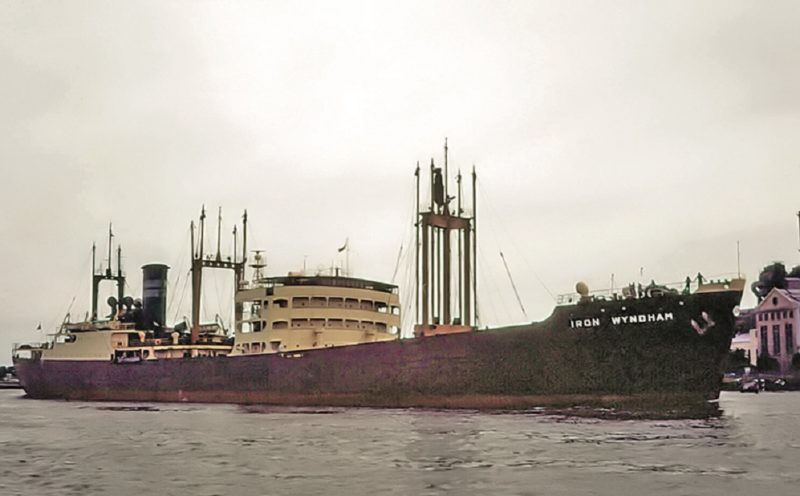
An anecdote – Cairns or cans?
The usual practice on this ship was to take on a full load of provisions in Brisbane before sailing. This meant that on the north bound part of the voyage, we always had a good supply and variety of fresh fruit as part of our meals. But on the southbound part of the voyage as we could only provision in Cairns and Townsville the supply, and especially the variety of fruit would decline, and we were generally left with only bananas and pineapples as the availability of most other varieties of fruit was limited in these places. At some point we decided to complain and contacted the union in Brisbane. A meeting was arranged onboard between the Chief Steward, Captain, union official and the ships delegates of which I was one. I asked why we could not get a variety of fruit in Cairns and as an example I mentioned pears. The chief steward said that you can’t get pears in Cairns but before he had time to explain why the union official, a fiery Scotsman shouted, “of course you can get pears in cans, big cans, and little cans”. The meeting broke up in laughter and we accepted the status quo.
After paying off I joined the SS Binburra. When I joined this ship, it had just been converted into what was known as a ‘semi container’ ship, meaning rather than carrying loose general cargo it now carried all cargo in containers stowed in the lower hold and on the hatch covers, and palletised cargo in the ‘tween deck but still used its own conventional cargo gear (16 derricks and 2 jumbo derricks) rather than a dedicated shore side container facility and equipment. After sailing from Melbourne, we encountered quite severe bad weather on the eastward transit of the Bass Strait and the ship was rolling heavily. About 0800 there was a load crashing noise as one of the fully loaded containers on number 3 hatch at the aft end of the foredeck broke its heavy chain lashings and fell off the hatch top landing on the deck and coming to rest against the outside bulwark. It was quickly noticed that every time the ship rolled the container would move slightly and then when the ship rolled back again the container would bump heavily on the bulwark.
All the off-duty deck crew (4 remaining watchkeepers and 2-day workers) were called out and given the task of ‘hardening’ down the container to stop it from moving. This meant using the cargo runners (heavy wire) connected to the cargo winches to form a ‘bird cage’ of wire over and around the container and then heave the wires tight using the cargo winch. To do this we had to clamber around the container attaching cargo lead blocks at various parts of the container and then dragging the wire cargo runner and feeding it through the lead blocks. It was dangerous as the ship was still rolling although not as bad because the ship had been placed in the ‘heave to’ position with reduced speed. But each of us had to be careful and especially nimble so as to quickly step back when the container moved and only rush in when things settled temporarily. After several hours we managed to get the wire cargo runner rigged and hauled tight on the cargo winch locking the container firmly in a rested position. Once in Brisbane and with the container safely removed the hull plates and bulwark were inspected and repaired. I think we even got a photo and mention in the Brisbane Courier Mail.
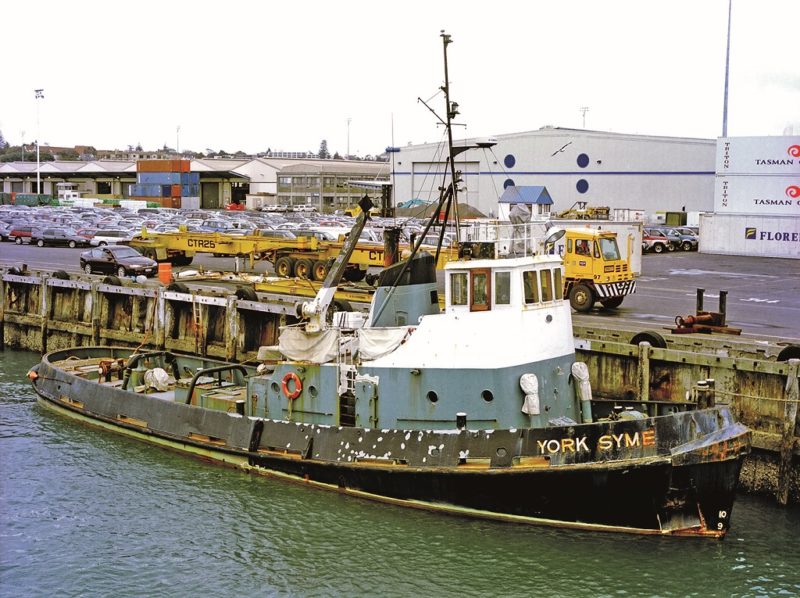
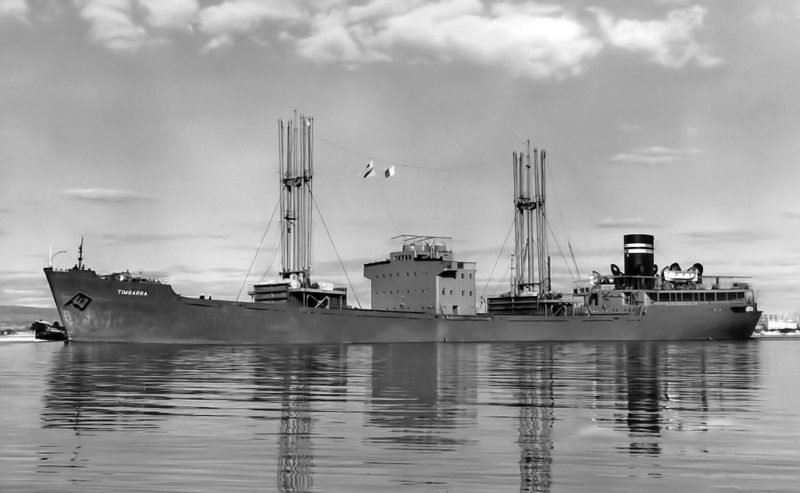
Never give away a job
Because this ship was semi containerised as mentioned, the number 1 cargo hold was too small to hold more than a couple of containers, so it was converted into an area to carry bulk malt. This was achieved by lining the inside of the cargo hold with stainless steel sheeting. The cargo of bulk malt was loaded using a hose suspended by a cargo runner and cargo hook from one of the cargo derricks at number 1 hatch. The cargo would arrive on the wharf in road tankers and park adjacent to the location of the cargo hold. The loading hose would be lifted into position with one end inside the cargo tank and the other connected to the tanker on the wharf from where the cargo was pumped through the hose into the cargo hold.
As the cargo hose would have to be regularly lifted above the level of the malt as the cargo space was being progressively filled each of the crew took it in shifts to sit on the cargo winch and make these small but repeated adjustments to the height of the cargo hose. It was a boring job and after a few voyages it was argued by the crew that the job would best be done by the waterside labour and the job was given to them. I recall the Melbourne union official being critical of us giving this job away. His argument was that if you give a job away you will never get it back and it could mean you being out of a job while the other party were still employed. He made sense to me. After discharge from the Binburra I joined a large British ship the MV Tri-Ellis, trading from Melbourne and Geelong to Nauru, Ocean Island and New Zealand.
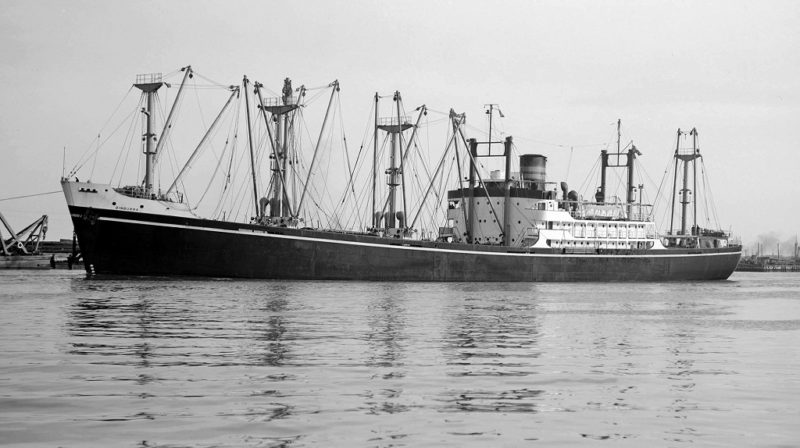
CONTINUED NEXT MONTH

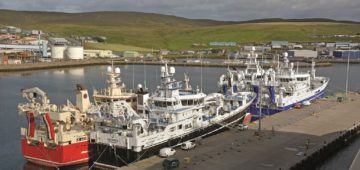


Comments
Sorry, comments are closed for this item